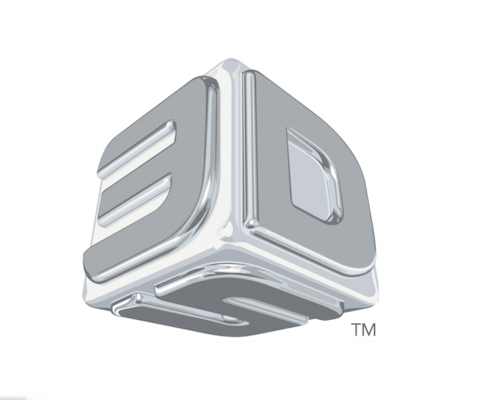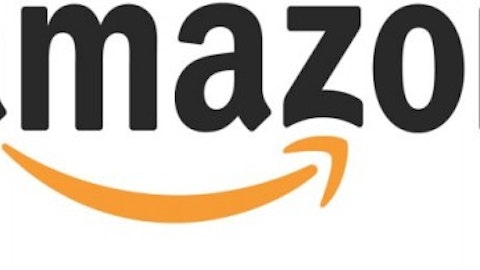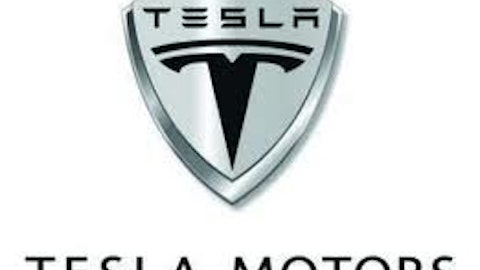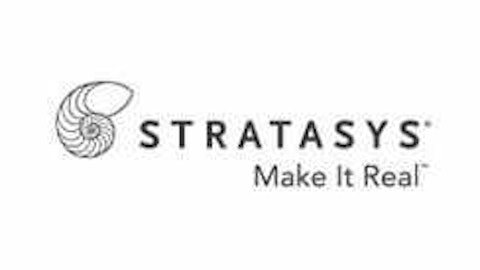The online retail behemoth Amazon.com, Inc. (NASDAQ:AMZN) has given a mainstream boost to the latest manufacturing revolution, 3-D printers, by launching a dedicated section for 3-D printers under its industrial and scientific department. In this section customers can shop for printers, printer filament, software, accessories, and books related to 3-D printing.
The office-supply store Staples, Inc. (NASDAQ:SPLS) is already selling 3D Systems Corporation (NYSE:DDD)’s consumer printer called Cube. Amazon, on other hand, is the official reseller of MakerBot Replicator 2 Desktop 3-D printer. Amazon, like others, believes that although the 3-D technology is exciting and looks promising, it still has a long way to go and requires the support of larger corporations.
The 3-D printing market is getting consolidated to two main firms: 3D Systems and Stratasys, Ltd. (NASDAQ:SSYS). Both of these were the top-performing stocks in 2012 with 3D Systems Corporation (NYSE:DDD) increasing by 270%, while Stratasys rose by 158% in the 12 months ending December 2012. This year, the growth of the two traditional 3-D stocks has been relatively modest, but a new entrant, ExOne (NASDAQ:XONE) is feeding the market’s appetite and its stock has risen by 93% this year.
Industrial applications and economic impact
Support for this industry now seems to be coming not only from Amazon but from other industrial powerhouses like General Electric and Ford Motors. 3-D printing is a far more efficient method – which translates into cost savings – as compared to conventional methods of cutting or drilling objects. In the future, Ford believes that customers will be able to print custom parts of their vehicles. Ford has been producing prototypes of brake rotors, rear axles and cylinder heads for test vehicles using 3-D printers for the last three decades. Similarly, General Electric plans to use 3-D printing in a variety of applications, ranging from fuel injectors for aircrafts to ultrasound probes used in hospitals. Others such as Mattel, Inc. (NASDAQ:MAT) have been using 3-D printers to make the parts of almost all of its toys including Max Steel, Barbie and Hot Wheels cars.
The Research firm Wohlers Associates has pointed out that the 3-D printing market is booming and registered a growth rate of 29.4% in 2011. In the next three years, it could achieve an average annual growth rate of 23%. Another well-known research firm, McKinsey’s, reports that by 2025, 3-D printing will have an annual economic impact of $230 to $550 billion due to reduction in costs and greater value of customized parts.
Increasing competition: 3D Systems vs. Stratasys
3D Systems is now expanding in different areas such as production, personal and professional segments, but broadly speaking, it mainly operates in the consumer area. Earlier this month 3D Systems Corporation (NYSE:DDD) acquired France-based Phoenix Systems, which specializes in direct metal laser sintering (DMLS) 3-D printers. Although the company hasn’t given any official figures, industry experts believe that 3D Systems would pay around $20 million for its 80% stake in the firm – this would put the Phoenix’s total value at $25 million. 3D Systems will also purchase the remaining 20% of shares in the near future.
3D Systems’ growth has been phenomenal, to say the least. In fact, Forbes magazine ranked it as the fourth fastest-growing tech company in 2012. In its last three years it has reported 46% and 30% growth in revenues and earnings. Furthermore, markets are foreseeing a growth rate of 37% in next 12 months.
So should you invest in it now? That might not be a good decision. Potential investors should note that 3D Systems is trading at 41 times its current year’s earnings and 33 times next year’s earnings estimates. Its market cap is more than 10 times its annual sales, it has a PEG ratio of more than 2 and it is not a dividend-paying stock. In short, there is very little attractiveness here. Therefore, despite the expected improvements in the coming quarters, I believe that at the current price levels, 3D Systems Corporation (NYSE:DDD) does not have significant room for growth and the stock is overpriced at the moment.
Stratasys, Ltd. (NASDAQ:SSYS) is more focused towards industrial clients. But it has recently acquired MakerBot, a leader in desktop 3-D printing, for $403 million. This is a significant move in the consumer category. Through this acquisition, I believe that Stratasys will ramp up the competition with 3D Systems’ Cube product line. This will be a significant step towards relatively cheaper printers. Currently, its lowest priced printer goes for around $10,000, while MakerBot’s Replicator 2 (being sold by Amazon) sells for around $2,200. In reply, 3D Systems will offer significant price cuts that will make its products far more appealing to consumers. It is expected to lower Cube’s prices to below $1,000 in the next 12 to 18 months.
Stratasys, Ltd. (NASDAQ:SSYS) is also as expensive as 3D Systems Corporation (NYSE:DDD) in terms of price-to-earnings based on current and next year’s estimates. But what makes it less appealing is that it hasn’t been profitable and generates negative free cash flow. It generates return on assets of just 0.5% and return on equity of -1.27%. Therefore, I believe that Stratasys is even less attractive than 3D Systems and definitely not a buy, but a hold at the current price levels.
ExOne is the new star of this industry. ExOne develops large, expensive industrial size printers for corporate customers. Sales volume is on the lower side; it sold just five printers in the last quarter but ended up with sales of $7.9 million. In this business model where the company is focused on the top end of the market, even a small increase in sales volume gives a big boost to revenues. This is exactly what has been happening as ExOne has recently posted quarterly year-over-year revenue growth of more than 190%. The business is not profitable yet, but what makes ExOne more interesting than the industry leaders is that it is more focused on a specific customer segment.
The markets have a high degree of optimism about metals printing in general and ExOne’s M-Flex metal-printing system in particular. This was reinforced by the expected increase in demand from companies like General Electric and Ford Motors.
The stock is trading more than 5,000 times its current year’s earnings estimates. This unusual number shows that although it is far more expensive than its bigger rivals – based on its own impressive growth as well as a possibility of a takeover – the markets are expecting big things from ExOne, which would push the shares even higher. Therefore, I would recommend ExOne.
The Economist compares this disruptive invention to the steam engine and the printing press. Business Insider says it’s “the next trillion dollar industry.” And everyone from BMW, to Nike, to the U.S. Air Force is already using it every day. Watch
Sarfaraz Khan has no position in any stocks mentioned. The Motley Fool recommends 3D Systems, Stratasys, Ltd. (NASDAQ:SSYS), and The ExOne Company. The Motley Fool owns shares of 3D Systems and Stratasys, Ltd. (NASDAQ:SSYS) and has the following options: Short Jan 2014 $36 Calls on 3D Systems and Short Jan 2014 $20 Puts on 3D Systems.
The article Which 3-D Printing Company Should You Choose? originally appeared on Fool.com.
Copyright © 1995 – 2013 The Motley Fool, LLC. All rights reserved. The Motley Fool has a disclosure policy.





